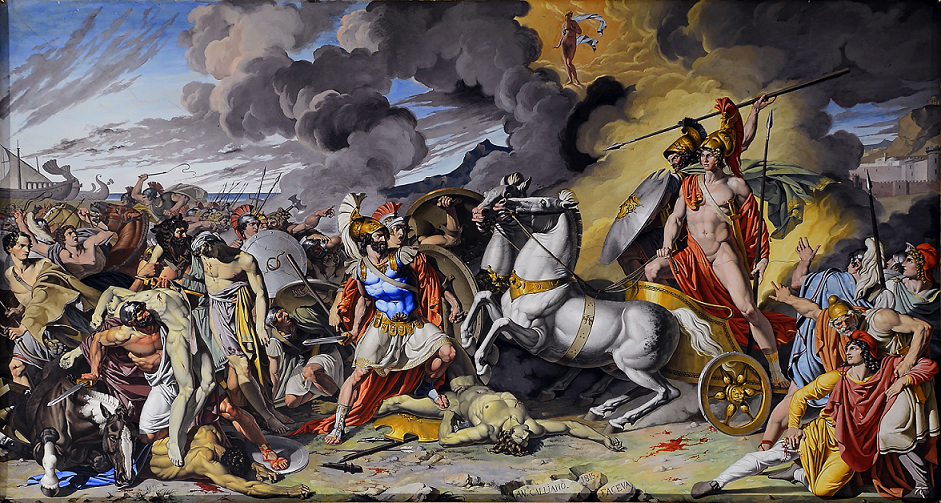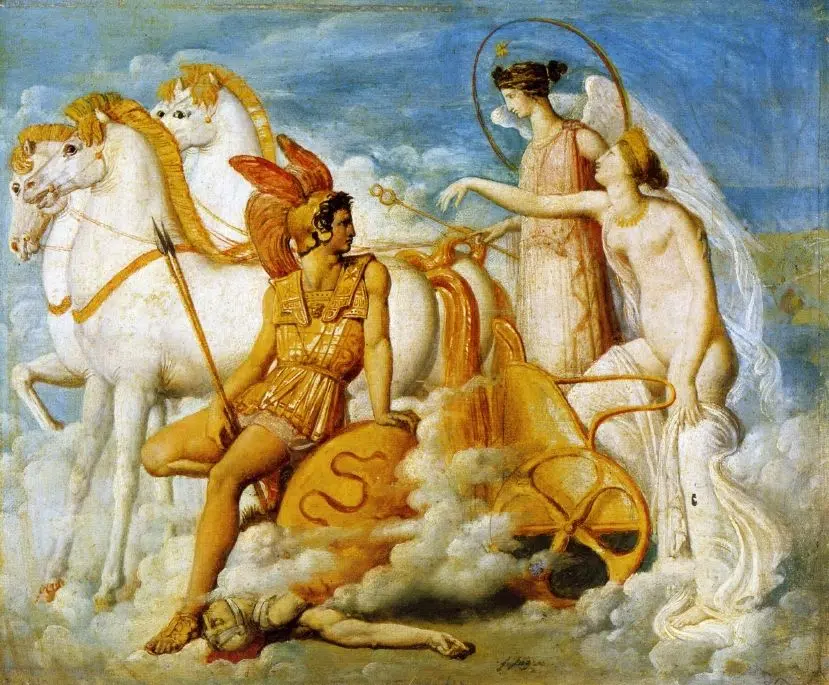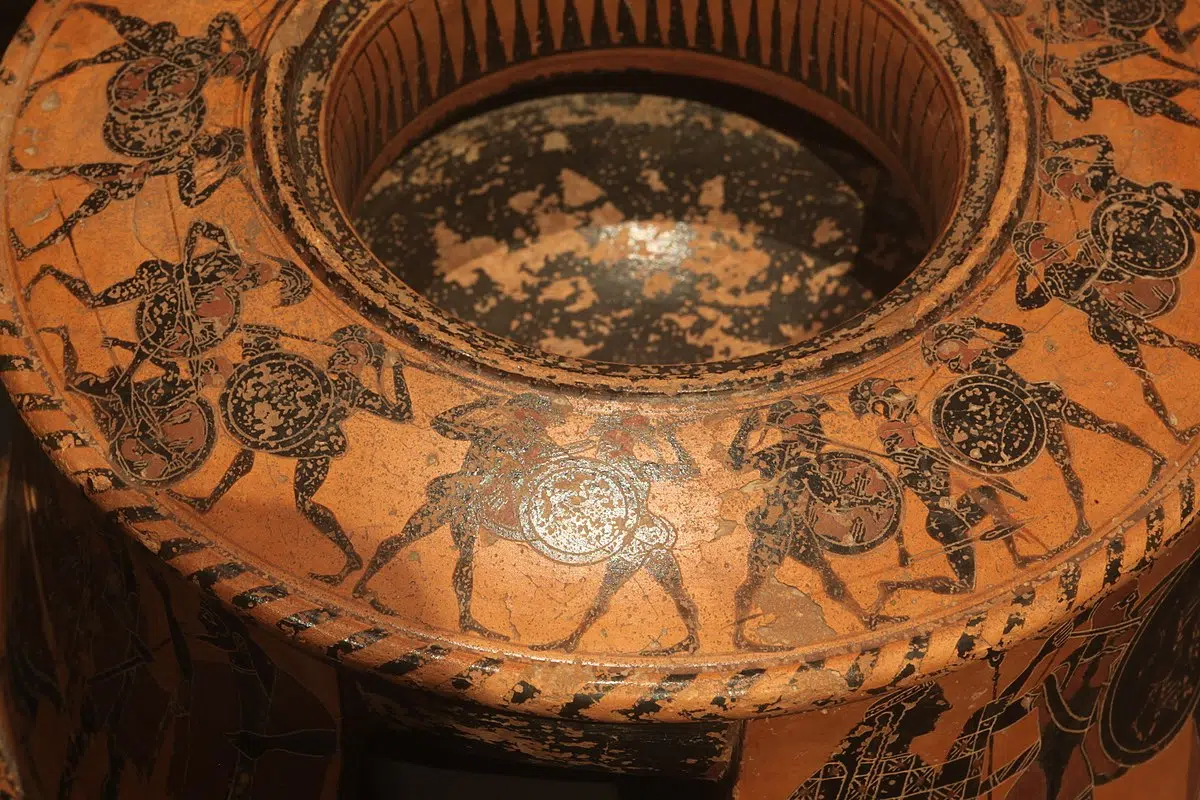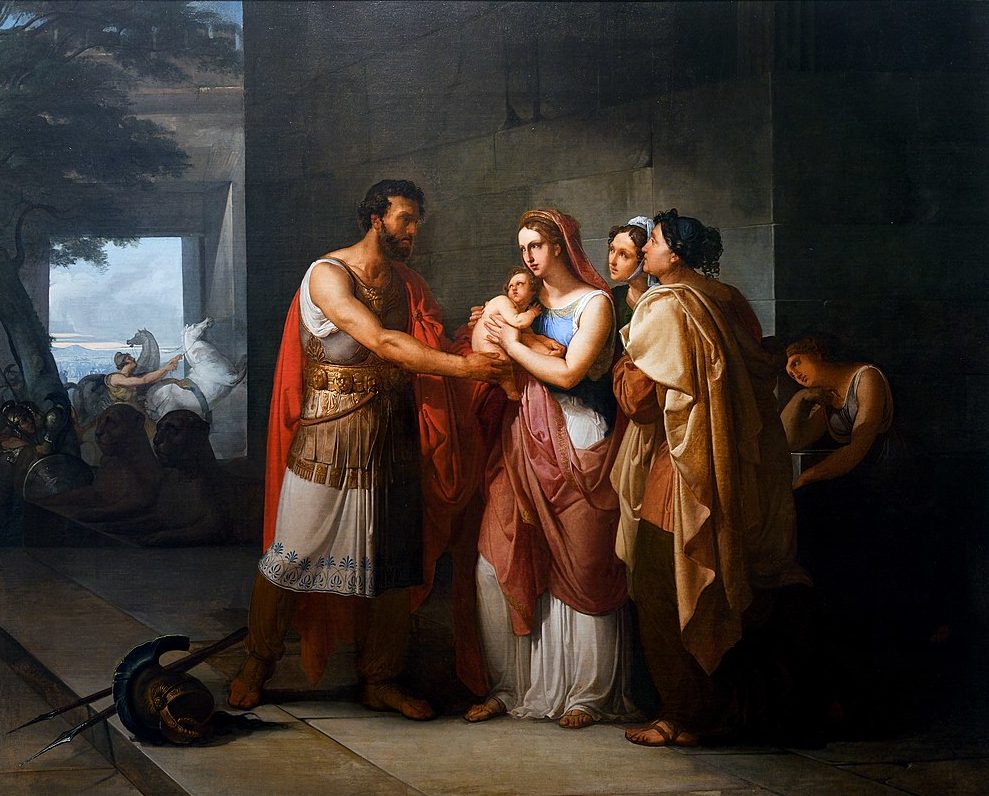
Homer’s Iliad, often considered to be the oldest extant work of Western literature, boasts a diverse cast of vibrant characters. The names of the heroes, Achilles, Hector, and Odysseus, have achieved immortality in the literary and mythological worlds.
Many of these characters are well known even to mainstream audiences that do not otherwise have much exposure to Greek mythology. Big-budget blockbusters such as Troy (2004) have catapulted Brad Pitt’s Achilles into pop culture.
However, Homer’s epic poem recounts the adventures of a much wider cast of heroes, many of whom do not even appear in recent film and TV adaptations. Despite their relative obscurity in modern times, these lesser-known characters also contribute significantly to one of the grandest stories ever told.
The Iliad, a short overview
Homer’s epic poem tells the events in the final year of the ten-year-long Trojan War. In the story, the Greek army besieges Troy after the abduction of the Spartan queen, Helen, by the Trojan prince, Paris.
Much of the story follows Achilles, the near-invulnerable Greek hero, and his rivalry with the Greek army’s commander, Agamemnon. On the opposite side is Hector, the foremost hero fighting for the Trojans.
The epic poem builds up toward the climatic duel between Achilles and Hector, Odysseus’ ingenious plan to hide the Greeks in the Trojan Horse, and the sacking of Troy. All the while, the Olympian gods conspire to direct the events of the war toward their desired outcome.
The Iliad draws its name from “Ilios,” the ancient Greek name for Troy, which was situated in western Anatolia in what is modern Turkey. The city, and by extension the war itself, was long deemed to be a mythical invention until Heinrich Schliemann discovered its probable site in 1870.
Most historians now agree that a siege or series of sieges took place at Troy around the 12th or 11th century BC. Homer may have heavily dramatized the events of the Iliad, and the exact historicity of the war may never be fully known, but the academic consensus is that there exists a historical core to Homer’s tale.
Diomedes
Many great warriors took to the battlefield in the Iliad, and among the greatest was Diomedes, king of Argos. Homer describes him as a “master of the battle cry,” and he sails to Troy leading his men in “eighty black ships.”
During the war, Diomedes slays many great Trojan heroes, including Astynous, Hyperion, Abas, Polyidus, Xanthus, Thoon, Echemmon, and Chromius—the last two being sons of the Trojan King Priam.
Diomedes is favored by the goddess of war and wisdom, Athena. She aids him in the accomplishment of a feat only matched by Heracles in Greek mythology, the wounding of two immortal gods by a mortal man.
During combat with the Trojan hero Aeneas, a son of Aphrodite, Diomedes is disarmed. However, this does not dismay the Achaean Greek, and he crushes Aeneas’ hip with a giant stone.
Aphrodite comes to her son’s aid but is also attacked by Diomedes, who has the divine protection of Athena. The goddess of love and lust is struck in the arm and flees to Mount Olympus.
Later on the same day, Diomedes also comes face to face with Ares, the god of war. However, the goddess Athena, who supports the Achaean Greeks throughout the Iliad, comes to Diomedes’ aid, and he is able to strike Ares in the stomach with his spear. Thus, Diomedes emerges as the only mortal man in Greek mythology to wound two immortal gods on the same day.

Ajax the Great and Ajax the Lesser
Two legendary Greek heroes share the name of Ajax in the Iliad. Firstly, there is Ajax, son of Telamon, referred to as Ajax the Greater, who is one of the foremost Achaean warriors and is considered second only to Achilles.
Ajax the Greater is described as “the strongest of all the Achaeans” on account of his towering stature and great strength. He wields a spear and a massive cowhide along with a bronze shield.
Ajax the Greater duels many of the Trojan lords, but his most memorable encounters are with Hector. In the first duel, he wounds Hector with his spear and a large stone. However, the fight lasts almost an entire day and concludes with a draw. The two men show their respect for each other by exchanging gifts.
Ajax, son of Oileus, is called the “the Lesser” only because of the former Ajax’s greater reputation but is a capable and respected warrior in his own right. In the Iliad, Homer writes that “he was short and wore linen body-protection; but no Greek was his equal in spearmanship.”
Ajax the Lesser comes to Troy with forty black ships, leading the Locrian contingent and their allies. In some versions of mythology, he is struck down by Athena after the war as punishment for defiling the priestess Cassandra.

Briseis, one of the Iliad‘s tragic heroines
Briseis is the catalyst for the early events of the Iliad. Achilles takes her as his prize after the sack of Lyrnessus, but Agamemnon insists that she be taken by him as compensation when his own prize is taken away to satisfy the god Apollo.
Achilles is enraged and refuses to fight, which proves disastrous for the Greeks. Later in the epic poem, Achilles refers to Briseis as his “wife,” although the two were unmarried and she remained a slave.
Patroclus, at one point, promises that he will persuade Achilles to legally marry her and release her from slavery. Ultimately, both men die before this can come to fruition. After Achilles is killed, Briseis prepares his body for the afterlife.

Idomeneus of Crete
Idomeneus is the king of Crete and leads “eighty black ships” of Cretans to Troy. In the Iliad, he is described as a “great spearman” and enters battle on a chariot driven by his friend, Meriones.
Idomeneus is respected by the other Greeks as one of the army’s foremost generals and acts as one of Agamemnon’s most-trusted advisers. He kills many of the Trojans in battle and even some of the Amazons. He is also one of the Achaeans to face Hector and survive.

Andromache
In the Iliad, Andromache is the wife of Hector, and her character is emblematic of the suffering of Trojan women. Her union with Hector is presented as the ideal marriage according to ancient Greek values.
During the sack of Troy, Hector and Andromache’s infant son, Astyanax, is murdered. In some versions of the Trojan War story not written by Homer, Astyanax is thrown off the walls of the city and killed.
Andromache is taken captive after the war and given to Neoptolemus, the son of Achilles, as a concubine. She spends the rest of her life in Epirus.

See all the latest news from Greece and the world at Greekreporter.com. Contact our newsroom to report an update or send your story, photos and videos. Follow GR on Google News and subscribe here to our daily email!



